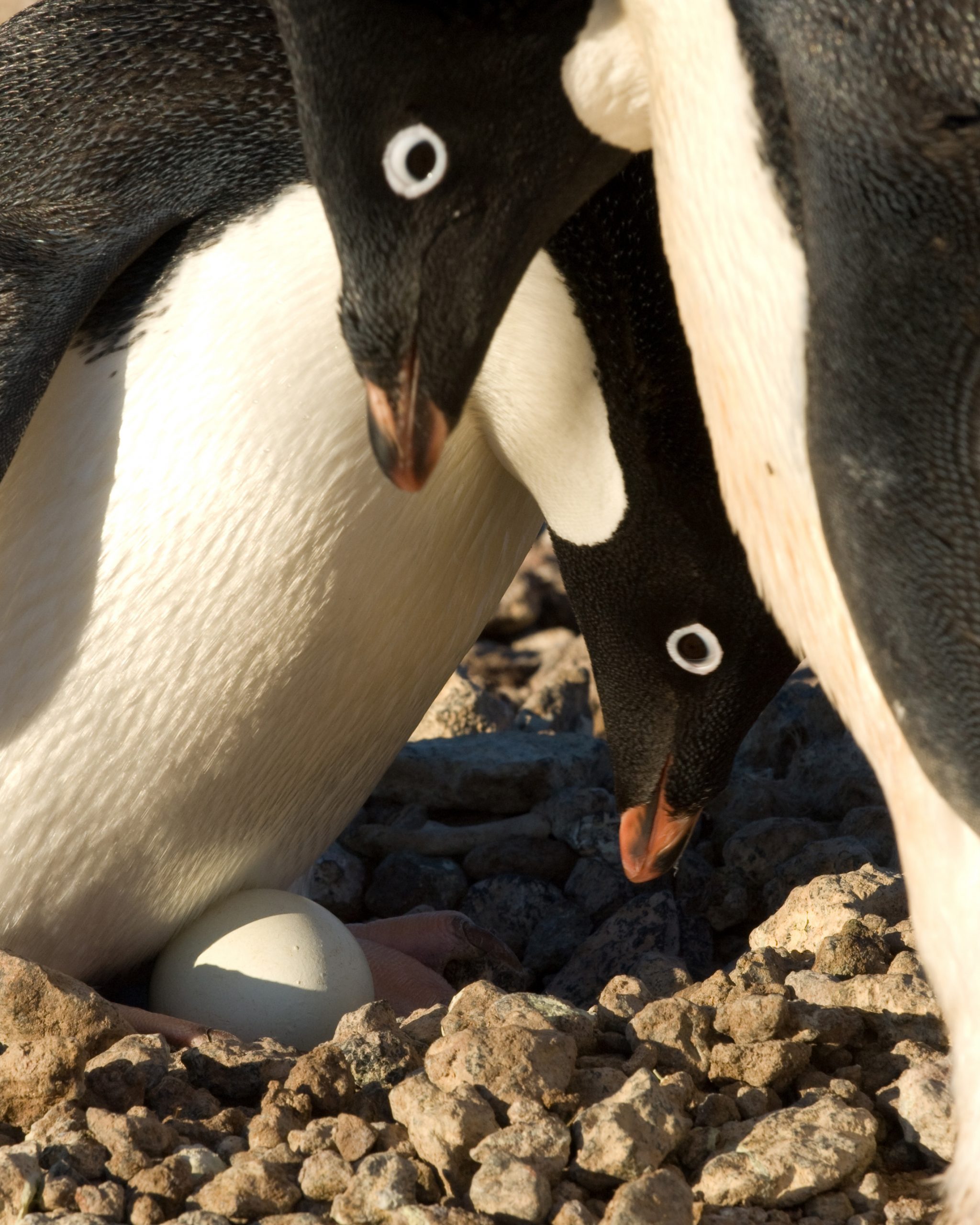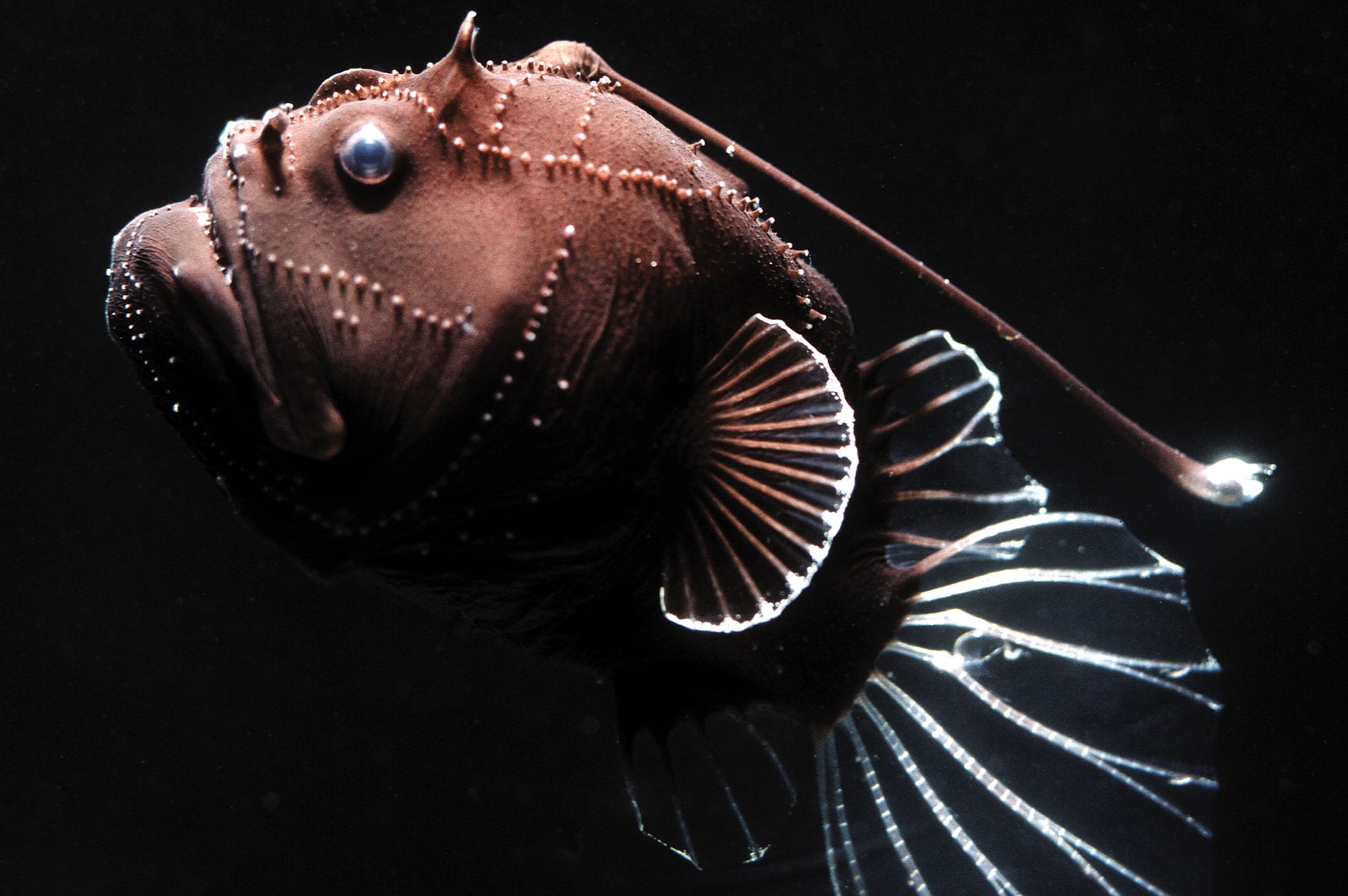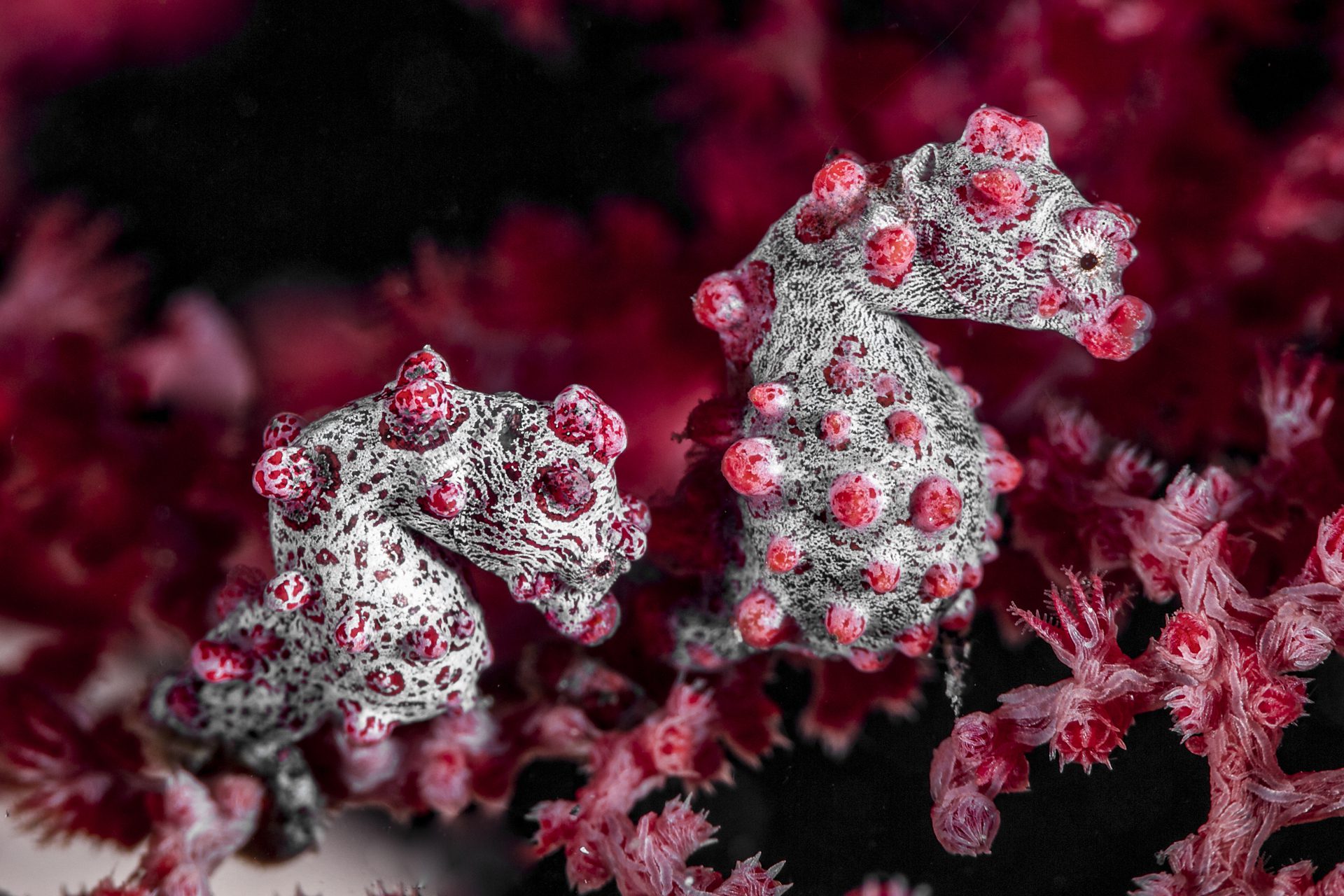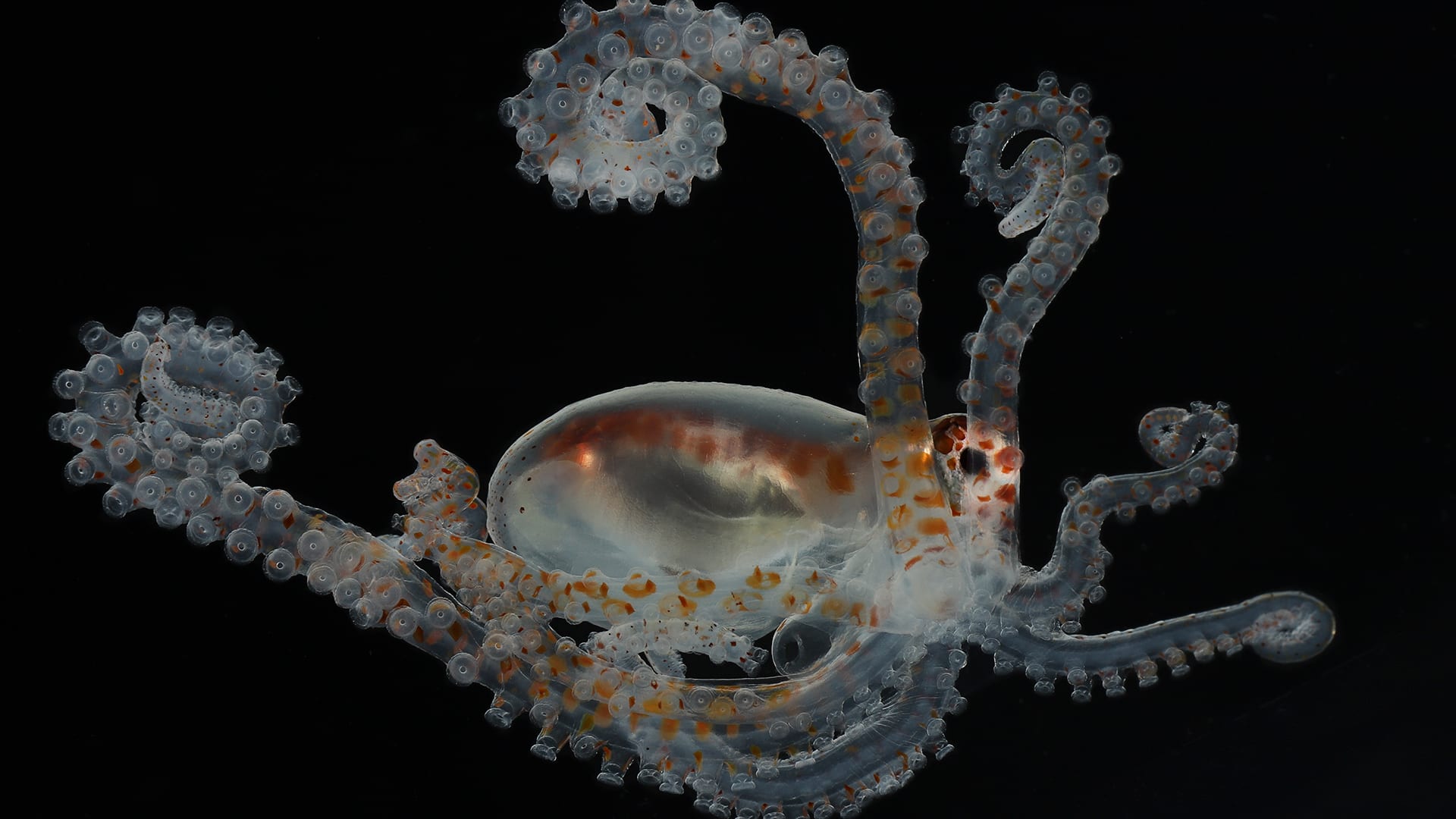Valentine’s Day Courtship Tips from the Ocean
Are you an ocean lover? Go a little deeper with these courtship tips from beneath the waves!
1) Fuse bodies
Finding love in the vast deep ocean is extremely tough. When a tiny male anglerfish encounters a much larger female, he bites her, letting his body absorb into hers. Over time, his organs wither away until he’s little more than a sperm-producing attachment. In return, she provides nourishment– directly from her bloodstream. It’s an extreme form of commitment, but in the vast, dark depths where mates are rare, this unbreakable bond boosts survival of the species.
2) Go dancing
Male pygmy seahorses famously carry the babies– but first, they have to win over their mates with an elegant underwater ballet. Holding tails, gliding, and swaying in perfect harmony, the pair strengthens their bond through this mesmerizing dance. Once the rhythm is just right, the female transfers her eggs into the male’s specialized pouch, where he nurtures them until they hatch. It’s a delicate duet that sets the stage for a new life on the reef.
3) Bring a rock


Gentoo, chinstrap, and Adélie penguins offer stones to their potential mates, a gesture that helps build sturdy nests. These nests protect eggs from the cold, howling winds, and melting snow, keeping them dry and safe. Both males and females collect rocks, but a well-timed gift from a suitor may help strengthen their bond. Scientists aren’t sure if the quality of the rock influences a female’s mating choice, but when good nesting spots are limited, every pebble counts. In the world of penguin courtship, a simple stone can be the foundation for both love and survival.
4) Lend a hand—or an arm!
Male octopuses have a specialized arm called a hectocotylus, designed for reproduction. While some species use it to pass sperm to a female, others take a more dramatic approach—detaching the arm entirely and leaving it with her. The female keeps the sperm and arm until she’s ready to fertilize her eggs. For species that mate this way, the male often dies shortly afterwards, while the female continues on, tending to her eggs until they hatch. Talk about a hands-off approach to romance!
5) Draw them a picture
Male white-spotted pufferfish (not to be confused with the white-spotted puffer) are underwater artists, sculpting intricate, geometric patterns in the sand to impress potential mates. First observed in 1995, these seafloor designs baffled scientists until researchers witnessed the artists in action a couple decades later. Using only their fins, the pufferfish carve symmetrical “love nests” up to two meters wide, carefully arranging ridges and grooves in mesmerizing detail. The better the design, the more likely a female is to choose the artist as her mate. It’s a masterpiece with a purpose—one that turns the seafloor into an underwater art gallery of love.



